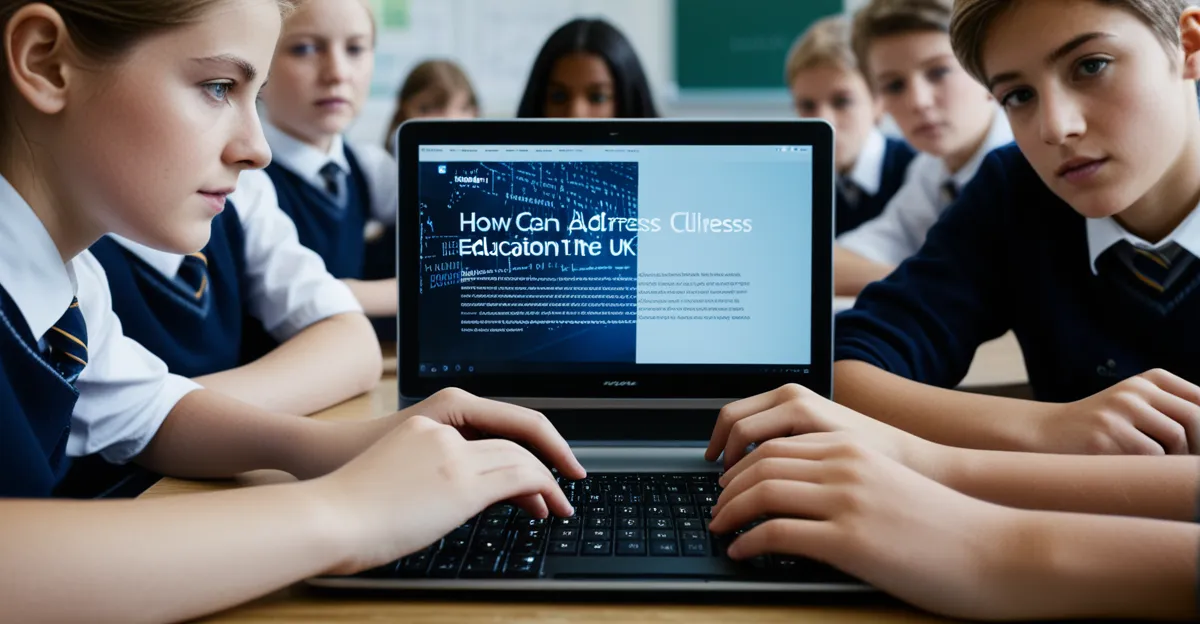Current Challenges in the UK’s Education System
In recent years, the challenges in UK education have become multifaceted, primarily focusing on funding dilemmas, accessibility issues, and diminishing student engagement. One of the significant barriers to learning is the inequitable distribution of resources, which often sees schools in wealthier areas boasting superior facilities compared to those in underprivileged regions. This disparity highlights severe educational inequalities across different demographics and areas, affecting students’ learning experiences and outcomes.
Moreover, the COVID-19 pandemic intensified existing challenges while introducing new obstacles, particularly in terms of technology adoption. Schools were required to rapidly transition to online platforms, magnifying the digital divide as not all students had equal access to the necessary devices or stable internet connections. As a result, this shift has had lasting impacts on learning outcomes, further exacerbating the educational inequalities that schools and policymakers are striving to address.
Also read : What Are the Recent Breakthroughs in UK Technology?
Another aspect of the systemic challenges is the issue of student engagement. With the shift to remote learning, students often found it harder to stay motivated and connected to their studies, impacting overall learning outcomes. The implementation of effective strategies to engage these students is crucial to overcoming the barriers to learning that they face in this evolving educational landscape.
Technological Innovations Addressing Educational Challenges
Educational technology has emerged as a pivotal tool in addressing some of the challenges in UK education, particularly in bridging the gap caused by educational inequalities. By leveraging digital learning tools and e-learning solutions, schools are better equipped to overcome barriers that have historically hindered student progress.
This might interest you : Are the Latest UK Tech Developments Overhyped?
Overview of Key Technologies
The integration of Learning Management Systems (LMS) has revolutionized how educational content is delivered and managed. Platforms like Google Classroom and Microsoft Teams have become staples in remote learning environments, providing students with seamless access to resources. These platforms facilitate communication between teachers and students, ensuring that instructional materials are consistent and accessible across various devices.
Interactive Learning Tools
Interactive learning tools introduce an engaging way to enhance student motivation and participation. Gamification, for instance, turns learning into an interactive experience that can increase enthusiasm for subjects that students might otherwise find challenging. Educational apps have been designed to bolster skills in areas such as literacy and numeracy, promoting a self-paced learning approach that accommodates different learning styles.
Implementing these digital solutions requires thoughtful planning and alignment with educational objectives to be truly effective. By emphasizing the use of these technological innovations, educators can not only mitigate current obstacles but also prepare for future educational demands.
Case Studies and Success Stories
Exploring real-world examples of success in education technology provides valuable insights into effective technology implementation. By analyzing these cases, educators and policymakers can better understand how to leverage digital tools for educational improvement.
Schools Adopting Technology Successfully
Several UK schools have become pioneers in using technology to enhance the learning experience. These schools have integrated diverse technological tools to address challenges in UK education and overcome barriers to learning. For instance, institutions leveraging blended learning models have seen improvements in student engagement and academic outcomes. The combination of in-person and digital education allows for a more flexible and inclusive approach, catering to varied learning styles and improving access for all students.
Evidence of Improved Learning Outcomes
Data underscores the positive impact of educational technology on student performance. Schools that have actively adopted digital learning tools report a notable rise in literacy and numeracy skills. Additionally, statistics show that students exposed to e-learning solutions exhibit increased enthusiasm and participation. These measurable improvements highlight the potential of technology to close the educational gap, addressing educational inequalities and ensuring equitable learning opportunities across different demographics.
Community and Parental Involvement
The role of community and parents in supporting a tech-driven educational environment cannot be understated. Successful schools often engage these stakeholders in the technology adoption process, fostering an ecosystem that supports both teachers and students. Parents, brought into discussions about technology’s role in education, actively contribute to the school community’s commitment. This partnership creates a more supportive learning environment, ensuring that technological advancements translate into tangible benefits for students and educators alike.
Expert Opinions on Future Trends in Educational Technology
As the landscape of educational technology evolves, insights from industry leaders and specialists provide a roadmap for potential advancements. There’s a compelling consensus that emerging technologies, specifically AI and machine learning, will play a significant role in shaping the future of education. These innovations promise to personalize learning experiences, adapt to individual student needs, and automate administrative tasks, allowing educators to focus more on effective teaching methods.
Experts highlight the importance of careful strategic planning in integrating these technologies. This involves creating robust frameworks that not only incorporate cutting-edge tools but also anticipate future educational demands. The goal is to ensure technology adoption aligns with broader educational policy goals to maximize its benefits.
Moreover, the caution around data privacy and ethics is becoming increasingly pertinent. As educational technology involves the collection and analysis of student data, safeguarding privacy is essential. Ethical considerations should be at the forefront of implementation strategies, ensuring student protection without hindering the potential of technological innovations.
With these considerations, experts emphasize a balanced approach, urging policymakers and educators to foster environments where technology enhances, rather than dictates, the educational process. Engaging in ongoing dialogue and collaboration with technology experts ensures that educational systems remain adaptive and forward-thinking.
Recommendations for Policymakers and Educators
The strategic alignment of educational policy with technological advancement is crucial in addressing the intrinsic challenges of the UK’s educational system. This strategic planning should focus heavily on implementing sustainable and inclusive technology integration strategies. By prioritizing robust frameworks for the adoption of educational technology, schools can ensure that technology neatly complements the curriculum, maximizing both accessibility and effectiveness.
Strategies for Technology Integration
Strategic planning in technology integration is key to overcoming educational inequalities. Educators and policymakers must collaborate to identify technologies that align with educational goals, ensuring that resources are equitably distributed. Effective technology implementation must consider the diverse needs of students, offering adaptive tools that cater to various learning styles and capabilities.
Professional Development for Educators
Professional development stands at the forefront of enabling successful technology implementation. It’s paramount for educators to receive continuous training that keeps them abreast of emerging innovations in teaching. This empowers teachers to leverage technology to enhance effective teaching methods and address barriers to learning more proficiently. Training programs should be dynamic, offering practical experience with new tools while fostering a culture of lifelong learning among educators.
Funding and Resource Allocation
Equitable funding models are essential in bridging the digital divide and ensuring that all students have access to educational technology. Strategically allocated resources can mitigate existing educational inequalities by providing necessary infrastructure and devices to underfunded schools. Establishing partnerships with technology providers can supplement these efforts, creating a sustainable model for continued support and innovation. Through these coordinated efforts, the potential for improved learning outcomes across all demographics can be fully realized.





